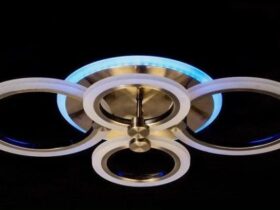Scientists from Slovenia managed to succeed in a study, thanks to which the world’s first microlazer was created, capable of evenly emitting light in absolutely all directions. The results of all experiments were published by the Optics Express magazine. The developers of the laser were scientists of the Joseph Stefan University of Ljubljan, Slovenia. The main qualities of the new device are cheapness, miniature, easy adjustment and ease of production. Thanks to the use of many similar minolazers, you can create without any problems a holographic laser panel that can display high -quality three -dimensional images that will be visible from any angles and without additional conditions.
The microlase is presented in the form of a drop -shaped optical system, radiating light flux evenly in all directions. This was achieved thanks to the peculiar reflectors who surround the crystal of the semiconductor laser. These reflectors are spiral molecules of a special dye, which are placed in the lower plane of the drop -like optical system. They are extremely similar to liquid crystal molecules, which are actively used in the production of liquid crystalline monitors. The molecule of this dye is not mixed with the molecules of the polymer fluid, which forms a drop -shaped optical system. Thanks to this property, there are many faces that refract the light flow, and then reflect it out. Experts compare the structure of this microlacer with a bulb, which consists of many transparent layers, each of which has its own refractive coefficient.
The simplicity of manufacturing such a laser lies in the fact that in production a self -collection technology is used, which uses the chemical features of the materials used. Consequently, the production of a matrix consisting of a million such lasers will take no more than one share of a second.
It should also be noted that the new laser has one distinctive feature – the ability to regulate. This means that you can configure its glow intensity and wavelength. This is achieved by changing the temperature of the crystal of the semiconductor laser and an electric discharge applied to the crystal, which has different voltage














Leave a Reply